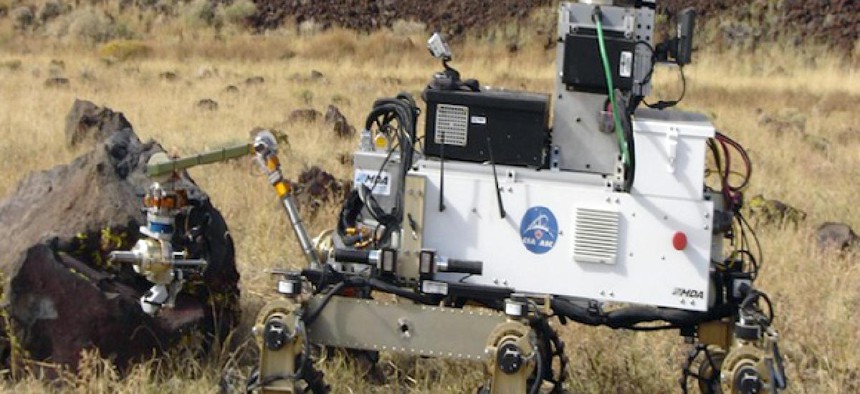Curiosity's cousins: Meet the rover fleet of the Canadian Space Agency

The CSA's Robot Explorer is designed to collect soil samples from Mars. Canadian Space Agency
A fleet of vehicles ready to explore lunar and Martian terrains
In 2009, the Canadian Space Agency committed $110 million the development of advanced robotics and space exploration technologies. The funding was designed to be spread over three years -- and now, right on schedule, the CSA has unveiled the results of its efforts: a fleet of rovers that will one day explore the moon and Mars. "One day" being sometime around the year 2020.
The vehicles range in size and function; some are familiarly Spirit- and Opportunity- and Curiosity-like, while others -- like my personal favorite of the group, the golf cart-esque SL-Commander -- are more distinct in form. Some of the vehicles will work independently, Space Safety Magazinereports, while others are designed to function as aides for astronauts. (The Commander, for example, could ostensibly transport astronauts across lunar or Martian landscapes. Or, because it is awesome, it could also drive autonomously.)
Canada's development of this particular fleet, CSA officials point out, makes particular sense. Not only has the country had space-engineering success with its celebrated Canadarm, but it also has a long history of developing technologies for its mining industry. Those are technologies, says Gilles Leclerc, CSA's director-general of space exploration, that will also prove useful in space exploration.
Despite their Canadian origin, though, the vehicles could find use in NASA missions, as well. "In fact, we have an invitation right now from NASA to start working on advancing these technologies and taking them to flight for eventually a mission," Leclerc said. And the Canadian rovers should blend right in: All in all, they are quite similar to their American counterparts -- except that, in addition to English and Martian, they also likely speak French.
NEXT STORY: Smartphones aren’t mini computers


